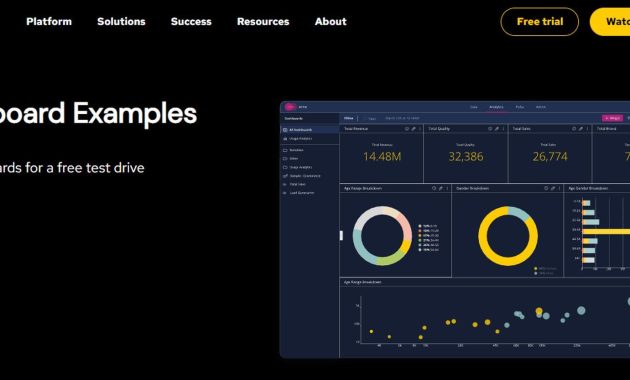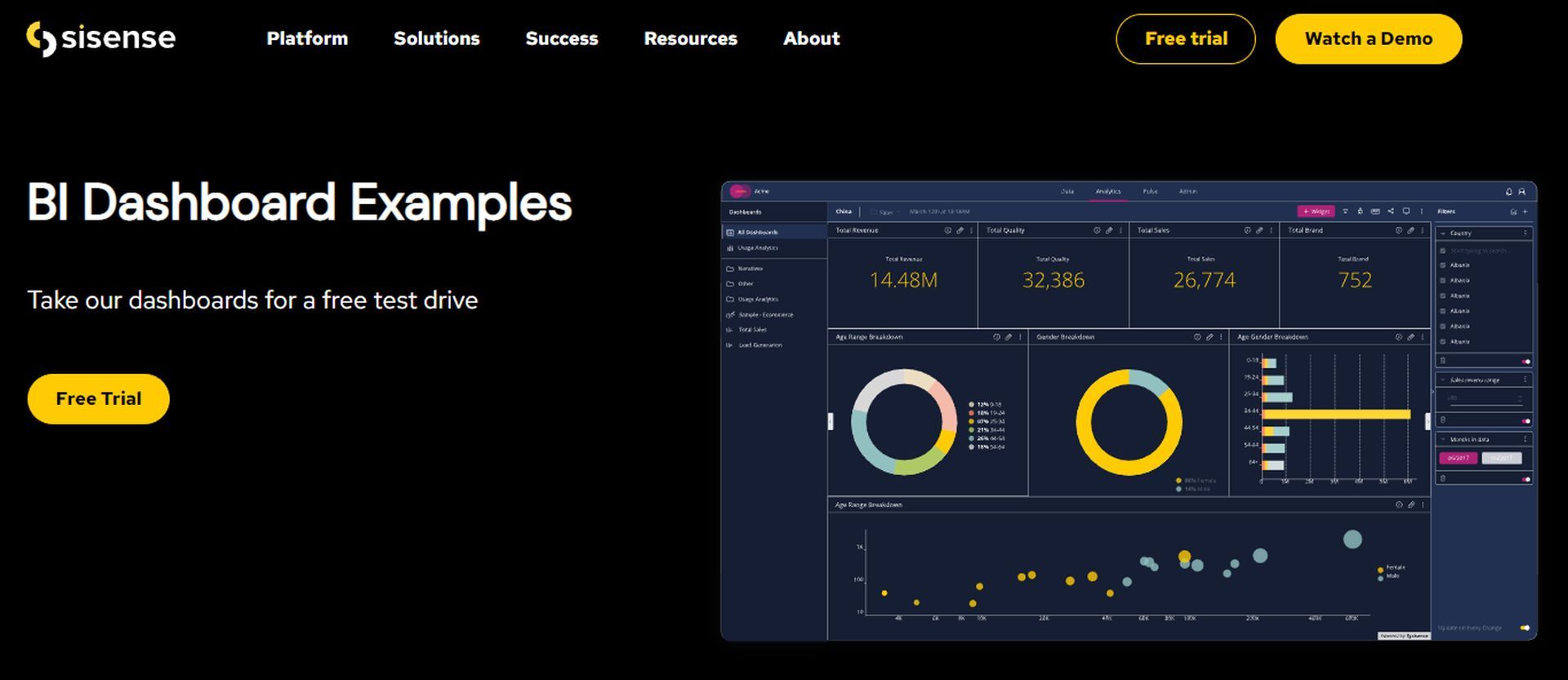
Mastering 10 Business Intelligence Tools for Real-Time Reporting: A Practical Guide
In today’s fast-paced business environment, the ability to make informed decisions quickly is paramount. Real-time reporting, fueled by robust business intelligence (BI) tools, empowers organizations to monitor performance, identify trends, and respond to challenges proactively. This guide provides a comprehensive overview of ten essential business intelligence tools for real-time reporting, equipping you with the knowledge to harness their power and drive your business forward. The core focus will be on how these tools facilitate real-time reporting, enabling data-driven decision-making.
The importance of real-time reporting cannot be overstated. It allows businesses to:
- Gain a Competitive Edge: Quickly adapt to market changes and seize opportunities.
- Improve Operational Efficiency: Identify bottlenecks and optimize processes.
- Enhance Customer Satisfaction: Respond to customer needs promptly and personalize experiences.
- Reduce Risks: Detect anomalies and prevent potential problems.
This article will explore the landscape of business intelligence tools, highlighting their strengths and how they contribute to effective real-time reporting. We’ll delve into the functionalities, use cases, and considerations for selecting the right tools for your specific needs. By mastering these tools, you can unlock the full potential of your data and transform it into actionable insights.
Understanding the Fundamentals of Business Intelligence and Real-Time Reporting
Before diving into the tools, it’s crucial to understand the core concepts. Business intelligence involves the processes, technologies, and applications used to collect, analyze, and present business data. Real-time reporting takes this a step further, providing up-to-the-minute data and insights, enabling organizations to react instantaneously to changing conditions. This is where the power of business intelligence tools truly shines.
Key components of a successful real-time reporting system include:
- Data Sources: Databases, spreadsheets, cloud services, and other sources from which data is extracted.
- Data Integration: The process of combining data from multiple sources into a unified view.
- Data Warehousing: Storing historical data for analysis and reporting.
- Data Analysis and Visualization: Using tools to analyze data and create dashboards, reports, and visualizations.
- Alerting and Notifications: Automated alerts triggered by specific data conditions.
The tools discussed below excel in one or more of these areas, forming a comprehensive ecosystem for effective real-time reporting. The specific features of each tool are what makes business intelligence so powerful for real-time reporting.
Top 10 Business Intelligence Tools for Real-Time Reporting
The following tools represent some of the leading solutions for real-time reporting. Each offers unique features and capabilities, catering to diverse business needs. The primary aim is to showcase how these business intelligence tools are leveraged for real-time reporting.
Tableau
Tableau is a widely recognized business intelligence platform renowned for its intuitive interface and powerful data visualization capabilities. It allows users to connect to a wide range of data sources, create interactive dashboards, and generate real-time reports. Tableau’s ability to handle large datasets efficiently makes it ideal for organizations with complex reporting needs. Its real-time capabilities are a major asset.
Microsoft Power BI
Microsoft Power BI is a comprehensive business intelligence tool that integrates seamlessly with other Microsoft products. It offers a user-friendly interface, robust data modeling features, and a vast library of pre-built visualizations. Power BI’s real-time data refresh capabilities and its ability to create interactive dashboards make it a popular choice for businesses of all sizes. It is designed to facilitate real-time reporting.
Qlik Sense
Qlik Sense is a self-service business intelligence platform that uses an associative data model. This allows users to explore data freely and uncover hidden insights. Qlik Sense’s real-time data streaming capabilities and its focus on user-driven analysis make it a powerful tool for real-time reporting. The tool emphasizes real-time reporting capabilities.
Looker
Looker is a data analytics platform that allows users to build data models and create custom dashboards. It is particularly well-suited for organizations with complex data structures and a need for advanced analytics. Looker’s real-time data exploration features and its ability to integrate with various data sources make it a strong contender in the real-time reporting space. It is a great option for real-time reporting.
Sisense
Sisense is a business intelligence platform designed for ease of use and scalability. It offers a drag-and-drop interface, pre-built connectors, and the ability to handle large datasets efficiently. Sisense’s real-time data processing capabilities and its focus on providing insights to business users make it a valuable tool for real-time reporting. It is built with real-time reporting in mind.
ThoughtSpot
ThoughtSpot is a search-driven analytics platform that allows users to ask questions in natural language and receive instant answers. It is designed to empower business users to explore data without requiring specialized technical skills. ThoughtSpot’s real-time data exploration and its focus on user-friendly analytics make it a compelling choice for real-time reporting. The platform is ideal for real-time reporting.
Domo
Domo is a cloud-based business intelligence platform that offers a wide range of features, including data integration, data visualization, and collaboration tools. It is designed to provide a single view of all business data, making it easy for users to track performance and make informed decisions. Domo’s real-time data refresh capabilities and its focus on collaboration make it a strong contender in the real-time reporting market. It is a good choice for real-time reporting.
Zoho Analytics
Zoho Analytics is a business intelligence and analytics platform that helps you visualize your business data and create insightful dashboards. It offers a user-friendly interface and supports a wide range of data sources. Zoho Analytics’ real-time reporting capabilities and its affordability make it a great choice for small and medium-sized businesses. It supports effective real-time reporting.
GoodData
GoodData is a cloud-based analytics platform designed for building and deploying data-driven applications. It offers a robust set of features, including data integration, data modeling, and data visualization. GoodData’s real-time data processing capabilities and its focus on providing insights at scale make it a powerful tool for real-time reporting. It is a suitable choice for real-time reporting.
SAP Analytics Cloud
SAP Analytics Cloud is a cloud-based business intelligence platform that provides a comprehensive set of features for data visualization, planning, and predictive analytics. It integrates seamlessly with other SAP products and offers a user-friendly interface. SAP Analytics Cloud’s real-time data refresh capabilities and its ability to support complex business processes make it a strong choice for large enterprises. The tool is ideal for real-time reporting.
Key Features to Consider When Choosing a Business Intelligence Tool
Selecting the right business intelligence tool requires careful consideration of your specific needs and requirements. Here are some key features to evaluate:
- Data Connectivity: Ensure the tool supports your data sources.
- Data Visualization: Assess the quality and range of visualization options.
- Real-Time Data Refresh: Confirm the tool’s ability to refresh data in real-time.
- User Interface: Choose a tool with an intuitive and user-friendly interface.
- Scalability: Ensure the tool can handle your data volume and growth.
- Security: Prioritize tools with robust security features.
- Collaboration: Look for tools that support collaboration and sharing.
- Cost: Consider the pricing model and total cost of ownership.
Carefully evaluating these features will help you select the tool that best aligns with your business needs and enables effective real-time reporting.
Implementing Real-Time Reporting: Best Practices
Successfully implementing real-time reporting requires careful planning and execution. Here are some best practices to follow:
- Define Clear Objectives: Determine what you want to achieve with real-time reporting.
- Identify Key Metrics: Focus on the most important data points.
- Choose the Right Tools: Select tools that meet your specific needs.
- Design Effective Dashboards: Create dashboards that are easy to understand and use.
- Establish Data Governance: Ensure data quality and accuracy.
- Provide Training and Support: Train users on how to use the tools.
- Monitor and Optimize: Continuously monitor performance and make adjustments.
Following these best practices will help you maximize the value of your real-time reporting efforts.
The Future of Real-Time Reporting
The future of real-time reporting is bright, with continued advancements in technology driving innovation. Artificial intelligence (AI) and machine learning (ML) are playing an increasingly important role, enabling more sophisticated data analysis and insights. Cloud-based solutions are becoming more prevalent, offering greater flexibility and scalability. The evolution of business intelligence tools will continue to shape the landscape of real-time reporting.
As businesses become more data-driven, the demand for real-time reporting will only increase. By mastering the business intelligence tools discussed in this guide, you can position your organization for success in the years to come.
Investing in the right business intelligence tools and adopting best practices for implementation is key to achieving effective real-time reporting. These tools provide the foundation for data-driven decision-making.
Conclusion
Mastering the ten business intelligence tools discussed in this guide empowers organizations to harness the power of real-time reporting. By understanding the fundamentals, evaluating key features, and following best practices, you can transform your data into actionable insights. The ability to make informed decisions quickly is a critical factor in today’s competitive landscape. These tools will help to facilitate real-time reporting.
Embrace these tools, invest in your data infrastructure, and unlock the full potential of your business intelligence. The benefits of real-time reporting are clear: increased efficiency, improved customer satisfaction, and a stronger competitive advantage. Effective real-time reporting is a key element of success.
[See also: The Importance of Data Visualization in Business Decisions] [See also: How to Choose the Right BI Tool for Your Business] [See also: Data Integration Strategies for Real-Time Reporting]

